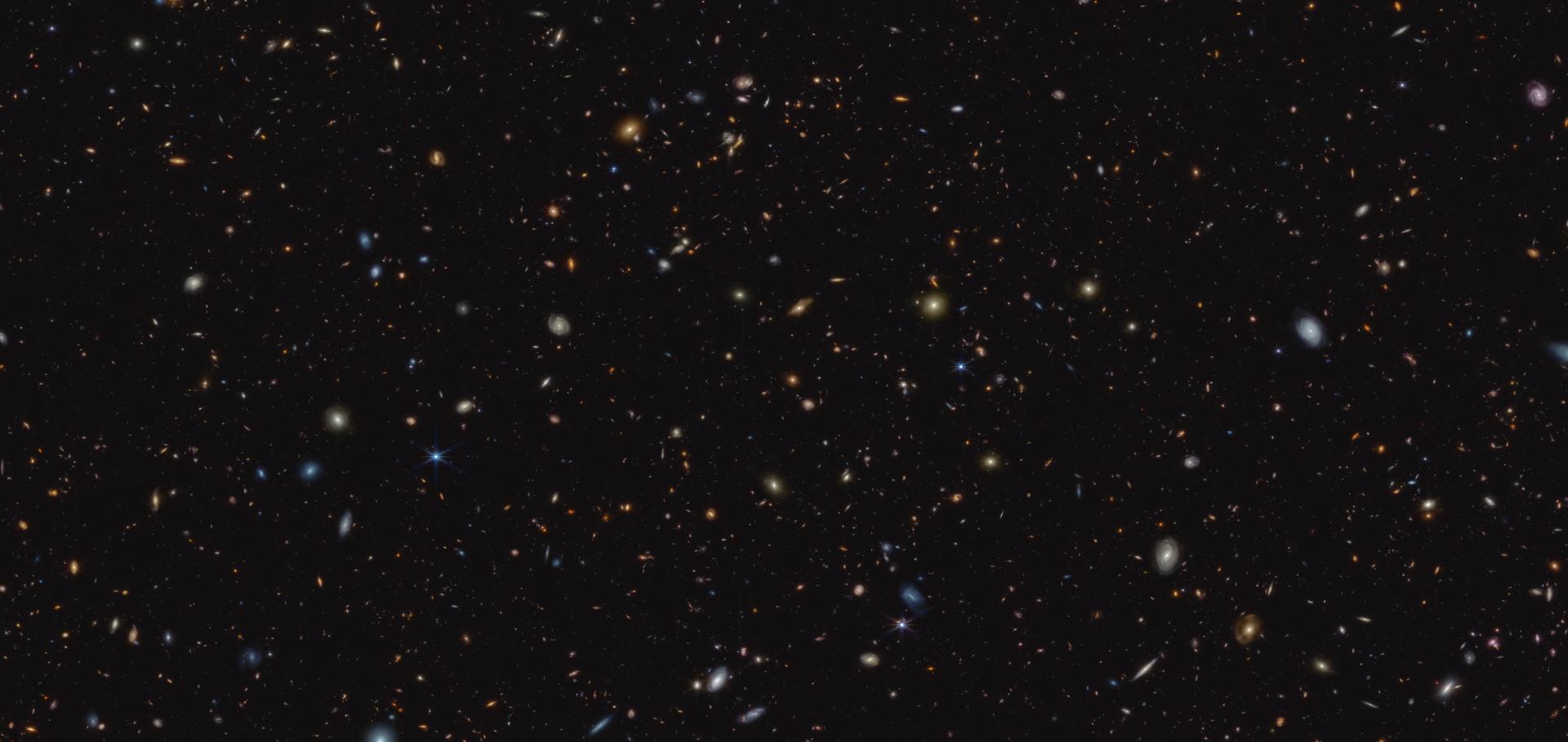The star-forming and ionizing properties of dwarf z ~ 6–9 galaxies in JADES: insights on bursty star formation and ionized bubble growth
Monthly Notices of the Royal Astronomical Society Oxford University Press (OUP) 533:1 (2024) 1111-1142
Earliest Galaxies in the JADES Origins Field: Luminosity Function and Cosmic Star Formation Rate Density 300 Myr after the Big Bang
The Astrophysical Journal American Astronomical Society 970:1 (2024) 31
Lyα emission in galaxies at z ≃ 5−6: new insight from JWST into the statistical distributions of Lyα properties at the end of reionization
Monthly Notices of the Royal Astronomical Society Oxford University Press (OUP) 531:2 (2024) 2701-2730
Quantifying the Escape of Ly α at z ≈ 5–6: A Census of Ly α Escape Fraction with H α -emitting Galaxies Spectroscopically Confirmed by JWST and VLT/MUSE
The Astrophysical Journal: Supplement Series American Astronomical Society 272:2 (2024) 33
Abstract:
The James Webb Space Telescope provides an unprecedented opportunity for unbiased surveys of Hα-emitting galaxies at z > 4 with the NIRCam's wide-field slitless spectroscopy (WFSS). In this work, we present a census of Lyα escape fraction (f esc,Lyα ) of 165 star-forming galaxies at z = 4.9–6.3, utilizing their Hα emission directly measured from FRESCO NIRCam/WFSS data. We search for Lyα emission of each Hα-emitting galaxy in the Very Large Telescope/MUSE data. The overall f esc,Lyα measured by stacking is 0.090 ± 0.006. We find that f esc,Lyα displays a strong dependence on the observed UV slope (β obs) and E(B − V), such that the bluest galaxies (β obs ∼ −2.5) have the largest escape fractions (f esc,Lyα ≈ 0.6), indicative of the crucial role of dust and gas in modulating the escape of Lyα photons. f esc,Lyα is less well related to other parameters, including the UV luminosity and stellar mass, and the variation in f esc,Lyα with them can be explained by their underlying coupling with E(B − V) or β obs. Our results suggest a tentative decline in f esc,Lyα at z ≳ 5, implying increasing intergalactic medium attenuation toward higher redshift. Furthermore, the dependence of f esc,Lyα on β obs is proportional to that of the ionizing photon escape fraction (f esc,LyC), indicating that the escape of Lyα and ionizing photon may be regulated by similar physical processes. With f esc,Lyα as a proxy to f esc,LyC, we infer that UV-faint (M UV > −16) galaxies contribute >70% of the total ionizing emissivity at z = 5–6. If these relations hold during the epoch of reionization, UV-faint galaxies can contribute the majority of UV photon budget to reionize the Universe.JADES: Insights into the low-mass end of the mass–metallicity–SFR relation at 3 < z < 10 from deep JWST/NIRSpec spectroscopy⋆
Astronomy & Astrophysics EDP Sciences 684 (2024) a75


